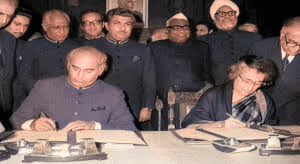After the 1971 war, India held prisoner around 93,000 Pakistani troops and civilians. In Pakistan there was a growing demand to get these prisoners released with the result that a Summit Conference between Pakistani President, Zulfiqar Ali Bhutto and the Indian leader, Mrs. Gandhi, was held at Simla from June 28 to July 2, 1972. The two countries reached an agreement on July 2. The agreement contained the elements of an earlier Indian draft, but the wording was considerably modified. In particular the clause referring to the ceasefire line in Kashmir was rephrased as to make it acceptable to Pakistan. Mrs. Gandhi, was held at Simla from June 28 to July 2, 1972. The two countries reached an agreement on July 2. The agreement contained the elements of an earlier Indian draft, but the wording was considerably modified. In particular the clause referring to the ceasefire line in Kashmir was rephrased as to make it acceptable to Pakistan.
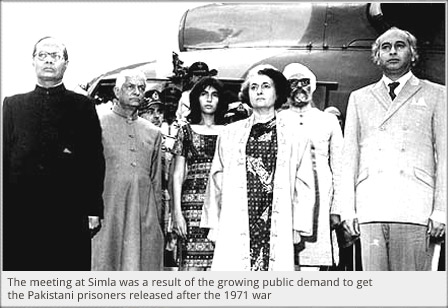
The broad features of this pact included that the principle and purpose of the charter of United Nations would govern the relations between the two countries. The two countries resolved to settle their differences by peaceful means through bilateral negotiations. The foremost conditions for understanding, good neighborly relations, and stable and lasting peace were laid that no country would interfere with the other country’s internal matters on the basis of mutual respect for peace, security, territorial sovereignty, mutual friendship and equality.
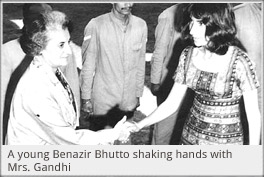 It was reiterated again in the agreement that efforts would be made to put an end, as far as possible, to all such disputes and differences that have been the cause of dissension between the two countries for the last 25 years. Both governments also agreed to take all steps within their power to prevent hostile propaganda directed against each other.
It was reiterated again in the agreement that efforts would be made to put an end, as far as possible, to all such disputes and differences that have been the cause of dissension between the two countries for the last 25 years. Both governments also agreed to take all steps within their power to prevent hostile propaganda directed against each other.
In order to progressively restore and normalize relations between the two countries, it was agreed that steps would be taken to resume communications,
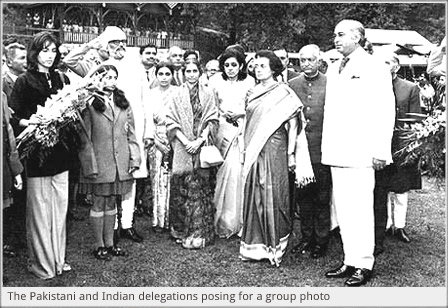 postal service, and promote and facilitate travel by sea, land and air. Trade and cooperation in economic and other agreed fields would also be resumed.
postal service, and promote and facilitate travel by sea, land and air. Trade and cooperation in economic and other agreed fields would also be resumed.
In order to initiate the process of durable peace, both the governments agreed that Indian and Pakistani forces would be withdrawn to their sides of the international border. The control line between Jammu and Kashmir would be the same as was on December 17, 1971. Both the countries would respect the international border and the withdrawal of the armies would be completed within 30 days of the implementation of the agreement.
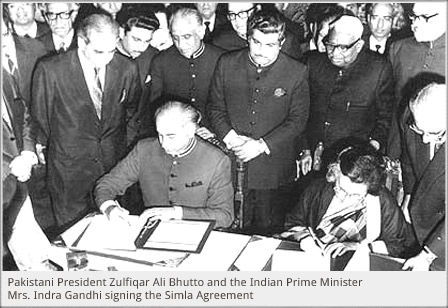
Leaders of both the countries agreed at Simla to meet again at a mutually agreed time so that representatives of both the countries could discuss more arrangements for durable peace, including matters relating to prisoners of war, local prisoners, final settlement of Jammu and Kashmir dispute and diplomatic relations. As a consequence of the clauses pertaining to the withdrawal of forces, Indian troops withdrew from the 5,139 sq. miles of Pakistani territory in Punjab and Sindh it had occupied during the war. Similarly, Pakistani troops withdrew from 69 sq. miles of territory in Punjab and Rajasthan. In Kashmir, India retained 480 sq. miles and Pakistan 52 sq. miles.
Pakistan ratified the Simla Agreement on July 15 and India on August 3, after which the agreement came into effect on August 4, 1972.
This article was last updated on Sunday, June 01, 2003[/fusion_text][/fusion_builder_column][/fusion_builder_row][/fusion_builder_container]




